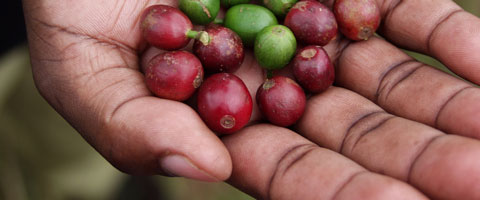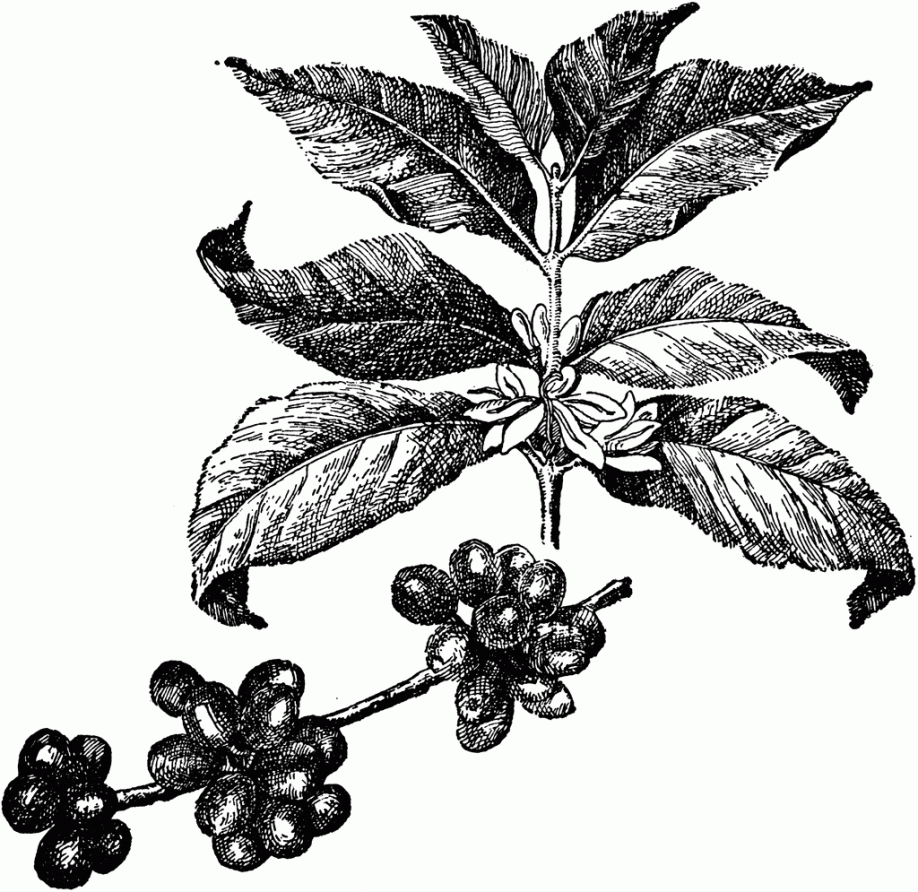Within the Green Kingdom there exists a vast family of flowering plants known as the Rubiaceae, a nation which counts as members a number of well-known and loved genera, including Rubia (madder), Galium (woodruff), Gardenia, and the treasured Coffea, which yields one of the most widely traded plant products in the world, the coffee bean. The coffee bean – technically a seed – is mostly obtained from two species: Coffea arabica, providing about 60 % or more of the world’s supply, and Coffea canephora, also known as Robusta, which accounts for the remaining 40% (Hoffman 12). Coffee is grown on every continent which spans the tropics of Cancer and Capricorn and can only grow there; it is at its best in areas of moderate rainfall and on hillsides between 1000 and 3000 ft in elevation (Crawford 50).
The black seed of arabica has been spreading across the world since before 800 AD, and there are dozens if not hundreds of localized varieties adapted to specific conditions borne of its diaspora. Its zone of highest genetic diversity is in the highlands of southwestern Ethiopia, an area considered by many to be its original homeland (Hein 177). As a potent bioactive medicine it has been revered for centuries; Avicenna wrote of the properties of coffee in the year 900. It contains dozens of synergistic alkaloids but its primary draw – and undoubtedly the source of its incredible power and influence – is the stimulant caffeine, although it also, like the similarly small, dark and tropical cacao bean, contains small amounts of theobromine.
Coffee has been a plant of infamy since it was first cultivated in Yemen and Ethiopia and smuggled to Europe in the late Middle Ages. Its history is inexorably intertwined with the other famous commodities of European colonialism, notably cacao, sugar, tea, and human slaves, and it is today traded on global markets alongside petroleum and wheat. Shrines to the coffee god can be found in breakrooms, waiting rooms, and many private homes across the Western world.

